A business launches its long-awaited software product, expecting it to improve efficiency and drive growth. But soon after release, users start complaining about unexpected crashes, broken features, and slow performance. What was meant to be a game-changer quickly turns into a frustration, leading to negative reviews, customer churn, and financial losses.
This is why software functional testing is a critical step in development. It helps identify defects before they reach users, ensuring that applications function smoothly under different conditions. By validating core features and testing for potential failures, businesses can avoid post-launch disasters and deliver a product that meets user expectations. Without proper testing, even a small glitch can impact user experience, security, and overall business operations.
In this blog, we will explore the role of functional testing in software quality, its different types, best practices, and how Helixbeat’s structured QA services help businesses develop reliable, high-performance applications.
What is Software Functional Testing?
Software functional testing is a quality assurance process that evaluates software based on defined requirements and expected outcomes. It verifies whether each feature functions correctly and delivers the intended results under different conditions.
Table of Contents
Key Aspects of Functional Software Testing
- Validates business requirements – Ensures that all software functionalities align with specified business needs.
- Detects issues before deployment – Identifies errors and inconsistencies early in the development cycle, preventing costly fixes later.
- Improves user experience – Eliminates usability issues that could affect navigation, responsiveness, or accessibility.
- Maintains industry compliance – Confirms that the software meets regulatory and security standards to avoid legal and operational risks.
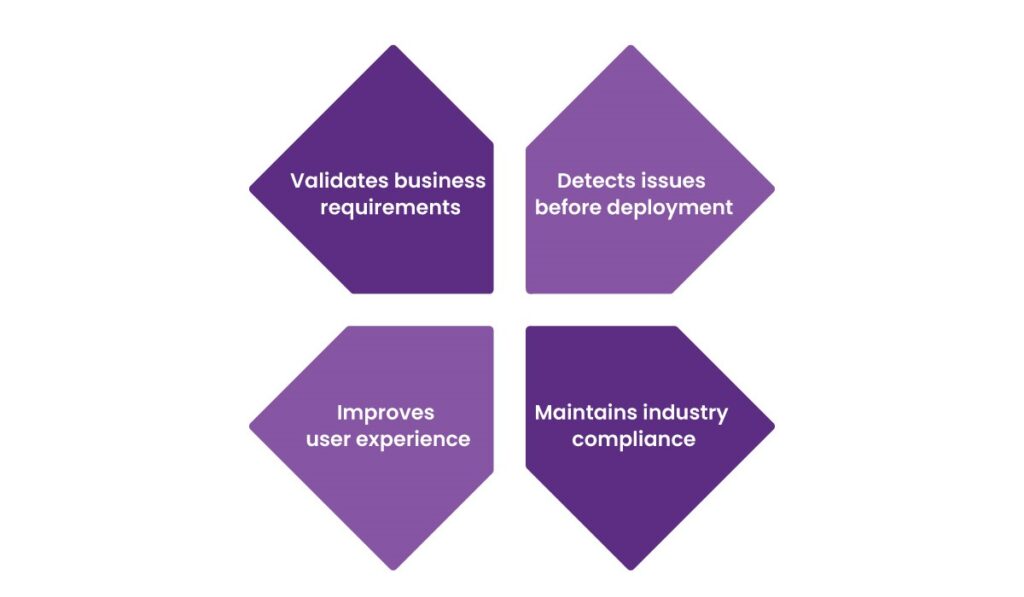
Types of Software Functional Testing
Different types of software functional testing help verify that applications behave as expected throughout the development cycle. Each testing method focuses on specific aspects of functionality, ensuring a stable and reliable application before release.
1. Unit Testing
Unit testing examines individual components or modules of a software application in isolation. It helps detect bugs at an early stage, ensuring that each function, method, or procedure operates correctly before integration.
Example: Testing a login function to confirm whether a valid username-password combination grants user access.
2. Integration Testing
Integration testing evaluates how different software modules interact with one another. It ensures smooth data flow and proper communication between integrated systems, preventing failures caused by incompatibilities.
Example: Testing an e-commerce checkout process that connects payment gateways, inventory management, and order processing systems.
3. System Testing
System testing assesses the entire application to verify that it meets both functional and business requirements. This type of functional software testing replicates real-world usage scenarios to detect potential issues in end-to-end workflows.
Example: Testing a banking application to ensure that fund transfers, transaction history, and account details function correctly without errors.
4. User Acceptance Testing (UAT)
UAT validates whether the software aligns with user expectations and business objectives. Conducted by actual users, this phase of software functional testing helps ensure that the application is ready for deployment.
Example: A new mobile banking app undergoes UAT by selected users before launch to identify usability concerns and necessary improvements.
5. Regression Testing
Regression testing ensures that new updates or added features do not interfere with existing functionalities. It helps maintain stability after software modifications, making it a crucial aspect of functional software testing.
Example: After implementing a dark mode feature, regression testing verifies that navigation, notifications, and other core functions continue working as intended.
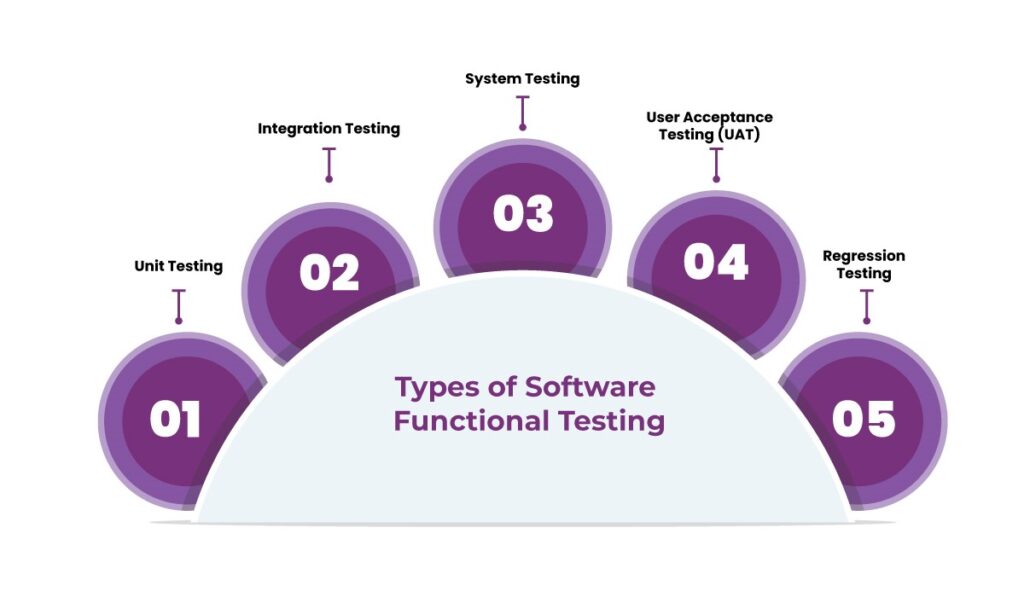
Why is Software Functional Testing Essential for Optimum Software Delivery?
Delivering high-quality software requires thorough testing to prevent defects, improve reliability, and maintain security. Software functional testing plays a crucial role in detecting issues early in the development cycle, reducing risks, and ensuring a stable application before release.
1. Prevents Costly Defects
Fixing defects after deployment is far more expensive than addressing them during development. Studies indicate that bugs identified post-launch can cost significantly more to fix than those detected early. Functional software testing helps catch these issues in advance, minimizing costs and preventing major failures that could affect user experience.
2. Enhances Software Reliability
Users expect software to work consistently and efficiently. Software functional testing ensures that core functionalities operate correctly under various conditions, leading to improved stability and user satisfaction. A well-tested application fosters trust and increases customer retention rates.
3. Ensures Security and Compliance
Security vulnerabilities can expose sensitive data, leading to legal and financial consequences. Functional software testing verifies security features and ensures compliance with industry regulations like HIPAA. Proper testing helps prevent data breaches and regulatory penalties.
4. Supports Seamless Integration
Modern applications rely on third-party services, APIs, and databases to function effectively. Testing confirms that these integrations work smoothly and without conflicts, ensuring a consistent user experience.
5. Reduces System Downtime
Software failures can cause unexpected downtime, disrupting business operations and resulting in revenue loss. Software functional testing ensures that applications remain stable and efficient, minimizing interruptions and maintaining operational continuity.
By incorporating software functional testing throughout development, businesses can deliver secure, high-performance applications that meet user expectations and industry standards.
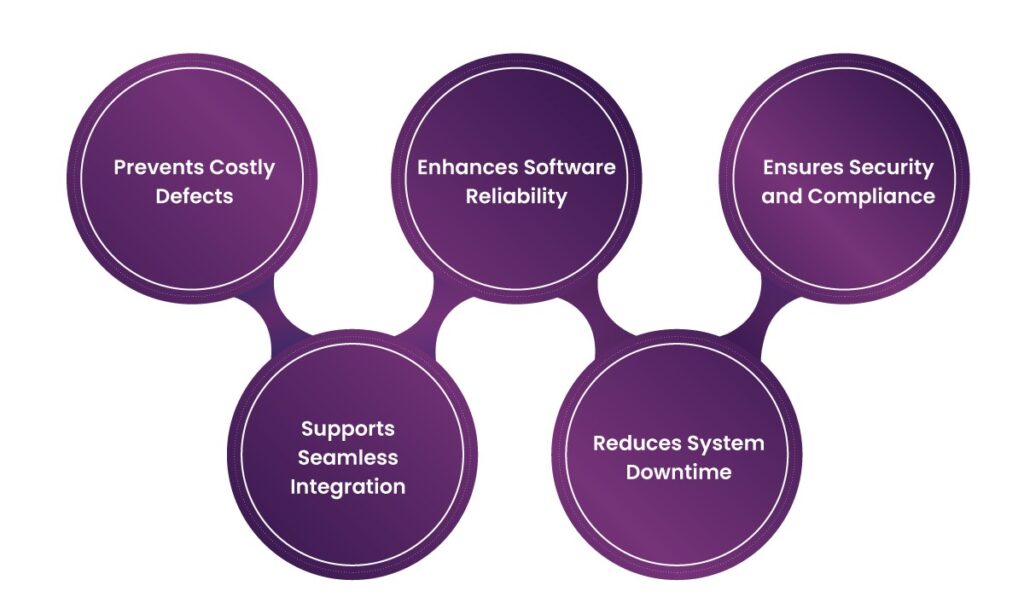
Effective Strategies for Functional Software Testing
To develop reliable and high-quality software, functional software testing must follow structured methodologies that enhance accuracy and efficiency. A well-planned approach helps identify defects early, ensuring a smooth user experience.
1. Define Clear Test Cases
A structured software functional testing plan should outline what needs to be tested, expected outcomes, and execution procedures. Well-defined test cases improve test coverage and make it easier to track and resolve issues.
2. Automate Repetitive Tests
While manual testing is essential for exploratory testing, automation improves efficiency by handling repetitive tests such as regression testing. Using automation tools speeds up test execution, reducing the risk of human errors.
3. Use Real-World Scenarios
Testing should replicate real-world user interactions to uncover potential usability and performance issues. Simulating actual usage conditions ensures that software performs as expected under different environments.
4. Continuous Testing
Integrating functional software testing at every stage of the software development lifecycle (SDLC) helps detect defects early and maintain software quality throughout development.
By following these best practices, businesses can enhance the effectiveness of functional software testing, leading to more stable and high-performing applications.
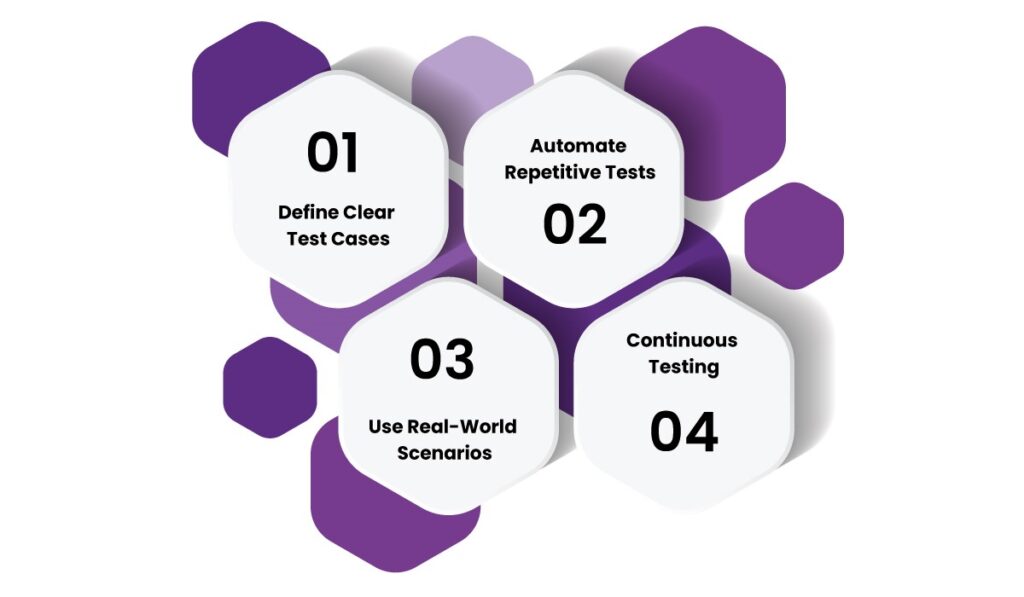
How Helixbeat Ensures Software Quality Through Functional Testing?
Software that fails under real-world conditions can lead to frustrated users, security risks, and financial losses. To prevent this, functional software testing must be integrated throughout the development cycle. Helixbeat helps businesses build reliable software by implementing structured testing strategies that catch defects early and optimize performance.
1. Comprehensive Testing Solutions
A strong testing framework is essential for delivering error-free software. Helixbeat conducts software functional testing, performance testing, and security assessments to verify core functionality, detect vulnerabilities, and validate system stability before deployment.
2. Tailored Testing Strategies
Not all applications require the same testing approach. Helixbeat creates customized QA plans based on business goals, industry requirements, and user expectations. This targeted strategy ensures that functional software testing addresses key risk areas.
3. Automation Expertise
Manual testing alone isn’t enough to keep up with frequent updates and complex systems. Helixbeat integrates automation tools for regression testing, API testing, and repetitive test cases, reducing manual workload and improving test efficiency.
4. Continuous QA Support
Testing shouldn’t end at deployment. Helixbeat provides ongoing quality assurance, ensuring that applications remain stable, secure, and high performing with regular software functional testing and maintenance.
By focusing on structured testing, automation, and continuous QA, Helixbeat helps businesses develop software that performs consistently and meets user expectations.
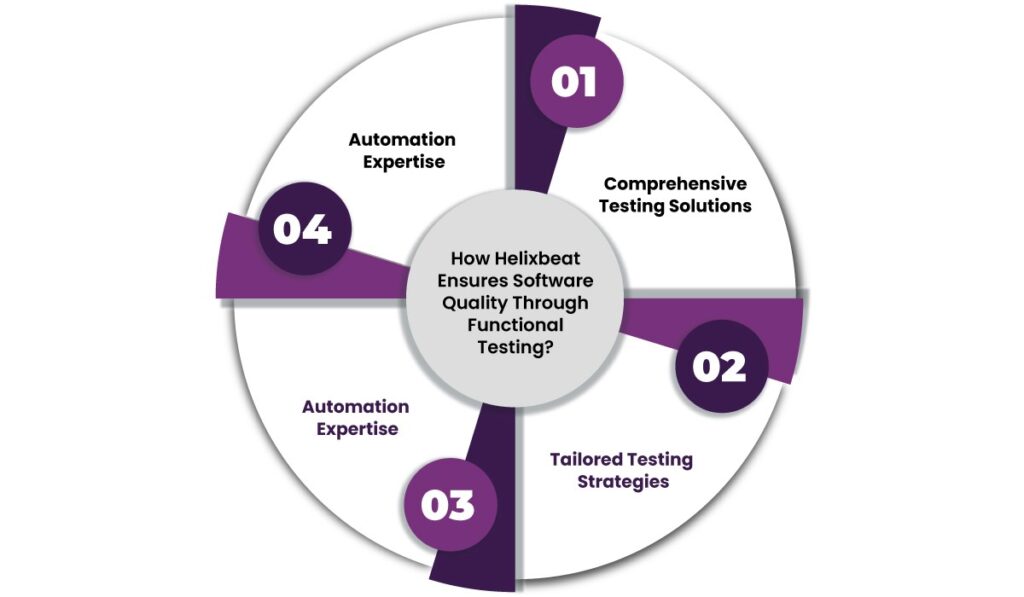
To Wrap Up
Software functional testing is a crucial part of software development, ensuring that applications are high-quality, reliable, and secure. By identifying defects early, improving user experience, and maintaining compliance, it plays a key role in successful software deployment.
Helixbeat offers expert functional software testing solutions, helping businesses deliver flawless software products. Whether you require manual or automated testing, Helixbeat ensures that your software meets performance, security, and usability standards.
Ready to build a high-quality, error-free software product? Partner with Helixbeat for end-to-end software functional testing solutions.
FAQs
1. What is software functional testing?
Software functional testing verifies that an application’s features and functions meet predefined requirements and work as expected.
2. Why is functional testing necessary?
It helps detect software defects early, improves user experience, and ensures compliance with industry standards.
3. What are the main types of functional testing?
Unit testing, integration testing, system testing, user acceptance testing (UAT), and regression testing.
4. How does functional testing differ from non-functional testing?
Functional testing verifies what the software does, while non-functional testing evaluates how well it performs under various conditions.
5. Can functional testing be automated?
Yes, automation tools like Selenium and TestNG are used to automate repetitive functional tests.
6. What industries benefit from functional software testing?
Industries like finance, healthcare, e-commerce, and SaaS companies rely heavily on functional testing.














